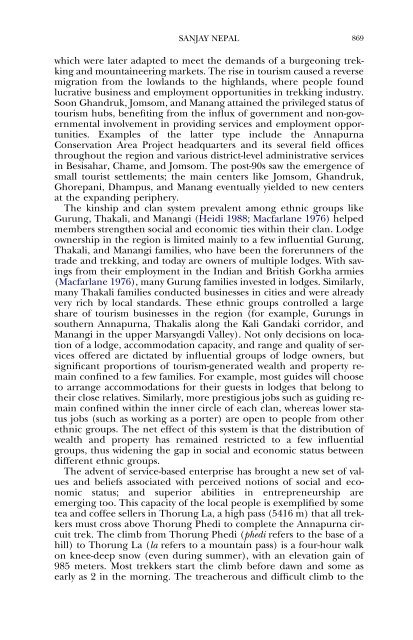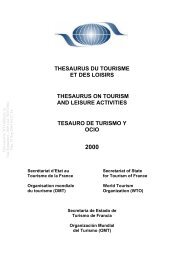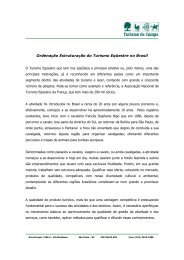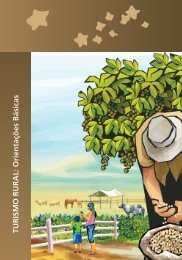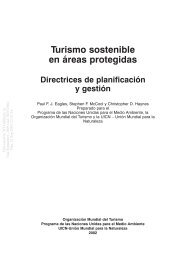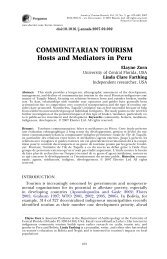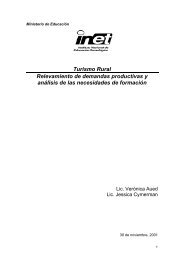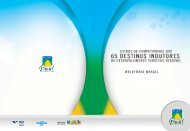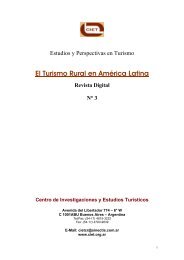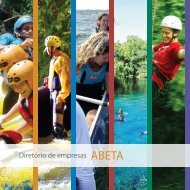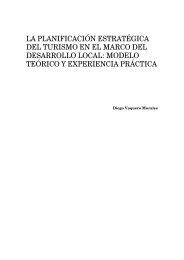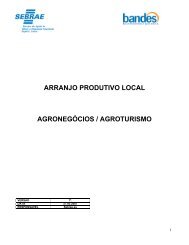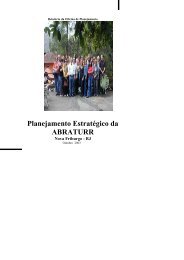TOURISM AND RURAL SETTLEMENTS Nepal's ... - ResearchGate
TOURISM AND RURAL SETTLEMENTS Nepal's ... - ResearchGate
TOURISM AND RURAL SETTLEMENTS Nepal's ... - ResearchGate
Create successful ePaper yourself
Turn your PDF publications into a flip-book with our unique Google optimized e-Paper software.
SANJAY NEPAL 869<br />
which were later adapted to meet the demands of a burgeoning trekking<br />
and mountaineering markets. The rise in tourism caused a reverse<br />
migration from the lowlands to the highlands, where people found<br />
lucrative business and employment opportunities in trekking industry.<br />
Soon Ghandruk, Jomsom, and Manang attained the privileged status of<br />
tourism hubs, benefiting from the influx of government and non-governmental<br />
involvement in providing services and employment opportunities.<br />
Examples of the latter type include the Annapurna<br />
Conservation Area Project headquarters and its several field offices<br />
throughout the region and various district-level administrative services<br />
in Besisahar, Chame, and Jomsom. The post-90s saw the emergence of<br />
small tourist settlements; the main centers like Jomsom, Ghandruk,<br />
Ghorepani, Dhampus, and Manang eventually yielded to new centers<br />
at the expanding periphery.<br />
The kinship and clan system prevalent among ethnic groups like<br />
Gurung, Thakali, and Manangi (Heidi 1988; Macfarlane 1976) helped<br />
members strengthen social and economic ties within their clan. Lodge<br />
ownership in the region is limited mainly to a few influential Gurung,<br />
Thakali, and Manangi families, who have been the forerunners of the<br />
trade and trekking, and today are owners of multiple lodges. With savings<br />
from their employment in the Indian and British Gorkha armies<br />
(Macfarlane 1976), many Gurung families invested in lodges. Similarly,<br />
many Thakali families conducted businesses in cities and were already<br />
very rich by local standards. These ethnic groups controlled a large<br />
share of tourism businesses in the region (for example, Gurungs in<br />
southern Annapurna, Thakalis along the Kali Gandaki corridor, and<br />
Manangi in the upper Marsyangdi Valley). Not only decisions on location<br />
of a lodge, accommodation capacity, and range and quality of services<br />
offered are dictated by influential groups of lodge owners, but<br />
significant proportions of tourism-generated wealth and property remain<br />
confined to a few families. For example, most guides will choose<br />
to arrange accommodations for their guests in lodges that belong to<br />
their close relatives. Similarly, more prestigious jobs such as guiding remain<br />
confined within the inner circle of each clan, whereas lower status<br />
jobs (such as working as a porter) are open to people from other<br />
ethnic groups. The net effect of this system is that the distribution of<br />
wealth and property has remained restricted to a few influential<br />
groups, thus widening the gap in social and economic status between<br />
different ethnic groups.<br />
The advent of service-based enterprise has brought a new set of values<br />
and beliefs associated with perceived notions of social and economic<br />
status; and superior abilities in entrepreneurship are<br />
emerging too. This capacity of the local people is exemplified by some<br />
tea and coffee sellers in Thorung La, a high pass (5416 m) that all trekkers<br />
must cross above Thorung Phedi to complete the Annapurna circuit<br />
trek. The climb from Thorung Phedi (phedi refers to the base of a<br />
hill) to Thorung La (la refers to a mountain pass) is a four-hour walk<br />
on knee-deep snow (even during summer), with an elevation gain of<br />
985 meters. Most trekkers start the climb before dawn and some as<br />
early as 2 in the morning. The treacherous and difficult climb to the


